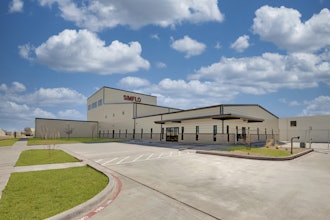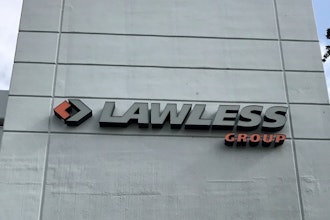When distributors and manufacturers are trying to cut reoccurring costs, yet drive dealer revenue, dealer portals are a smart way to accomplish both. Think of dealer portals as like a good ol’ fashion trading post back in the day. It is the connection point between the two parties conducting trade.
And when trading, per se, there are the basics that need to be communicated between the two parties, such as item, pricing, timing and the financial exchange itself. Of course, all the insight from the boots-on-ground were also exchanged in the woods, such as inherent supply and demand, competitive threats and new business opportunities.
Tradesman one: “I hear no one is interested in raccoon pelts anymore. They want beaver and sea otters now. You got any?"
Tradesman two: "I think I can get that to you in a few months. How many do you want and how much do you want to pay?”
This is a classic supply/demand scenario with embedded insight on product development, management and marketing.
I think you get the idea. The concept then is as it is today, except there were tons of waste in the equation — to no one’s fault given communication methods.
Fast forward to current day, and there are still lots of waste that can be remediated. A data-driven dealer portal is like a virtual trading post that can house and collect data exchanges for the benefit of both parties, so trading can be more efficient and effective. The operative phrase in the sentence is “the benefit of both parties.”
Technology will never replace the value of people-based relationships. In fact, a portal will actually free-up territory management’s time, so they can focus on relationship management, and less on administration. This is key, because the highest sunken cost to provide dealer coverage is labor. And it is the slowest and most laggard model to keep up with the everyday needs of dealers — especially if they are driving around 90 percent of the time. One of the fundamental rules of logistics is to touch the inventory once. The same principle applies with information. Touch it once, deploy everywhere.
In keeping with common workstreams across most sales channels, here are the fundamentals for any best in class dealer portal. Within each section, there are sub-workstreams.
- Marketing management - In this case, we are defining marketing as the classic downstream tactical promotions, whereas demand creation occurs in store, or broader trade areas of each dealer. As a distributor, it’s a challenge to keep up with each brand standard changes to remain compliant for usage. The same principle applies for dealers. A marketing asset repository, or sometimes called a DAM, allows the supplying party to upload, delete, change marketing assets such as logos, brochures, ads, FSI, radio, digital, hang tags, social, etc. Further, auto alerts from the manufacturer to distributors, dealers or visa versa about special seasonal promotions, and campaign kits creates a hands-off approach for all entities but provides real-time messaging to all. Each asset should have the ability for on the fly editing for dealer tagging and other required edits. This removes costs for creative departments. As assets are being deployed, real-time co-op financial management, dealer rebates and spiffs management tracking should also be built in.
- Product management — Not to be confused with active marketing of products in the above category, this is for continuous adjustments for any and all product-related activities. The most common are product/customer registrations, warranty management, MSRP updates, parts look-up and product catalogues, FAQs, OSHA updates, side by side competitive comparisons, product cheat sheets for sales people, vendor managed inventory (VMI) for re-ordering points and technical or product management contact information at OEM/dealer. As each dealer adapts their product mix by manufacturer or brand, this is the best opportunity to tie into their DMS/POS systems for real-time sell-through, with permission rights. And of course, any dealer latitude and longitude, contact info, credit terms, tech service staff and basic information can be populated, stored and shared across multiple accounting, CRM and marketing systems.
- Financial management — This should at least cover off the basic process of buying and ordering products, parts, etc. across logistics management that connects to accounting, shipping, processes. A headier approach is to add another layer of real-time reporting of goals versus actuals by each trading partner. It pulls in data from ERP, CRM, BI and other software assets to give a snapshot view of the health metrics previously agreed upon by either contract terms, or annual strategic planning. As thresholds are trending towards or away from desired outcome, the appropriate people should be notified to address the alert. So, for example, a dealer/distributor is to grow its product sales by 3 percent for product A, with daily, monthly and quarterly tracking. If the forecast versus actual versus project is not reaching the desired trend line, the territory manager is notified to help understand what the root cause for change is. Or perhaps credit limits or AP are hitting their maximum date range. It can also be useful for dealer rebates, discounting and SPIFF management. Benchmarking dealers in similar trade areas can also help get more insight why one is selling a certain product in a common market versus another who is not. Some may have this info may already in their ERP, CRM and BI tools but the obstacles of sharing are access and security. Some may not want to provide a back door into the software, so having a financial reporting tool within your portal only means the right info is being seen at the right time by the right people. To be clear, this needs to be in active state of information exchange, not a passive one only when a person logs in. Time is of the essence to pivot to reach peak performance across logistics management.
- Customer management — The definition of customer, is the end consumer of the product being sold to for use as a homeowner, or a commercial customer. This is probably the most foreign notion for the entire supply chain, except perhaps for the dealer itself who trades with them face-to-face or online. By combining both sell-in and sell-through data, it is far easier to determine which dealer and distributor is driving new customer versus repeat customer growth. Or where does the customer fit into the high/low volume and margin scale. Or perhaps understanding of my customer clusters from a geographic standpoint for dealer growth and expansion applications. Other important deliverables to/for distributors and dealers would be aggregating account-based marketing (ABM) lead capture tracking and distribution to proper sales staff to meet pipeline conversion —– like Pro fleet demos, visits or open house events.
Master data management with a layer of analytics and performance measurement should be underlying plumping so users get the insight and answers they need on a self-serve model – the touch inventory once method.
Companies have the choice of doing the same old same old and reap the margin benefits. They can build it themselves, though it can cost more time and money in the long run to keep up with all the technology changes and additional IT support. Ask yourself, is this really my core competency or is it selling goods? Or they can outsource and license it as a variable Op ex versus a Cap Ex. to innovation experts who make ongoing enhancements on a regular frequency. Choose the road that best defines your business and culture, so you can have the best in class portal to drive out costs for good and increase margin.
Jeff Winsper is the President of Black Ink Technologies, which helps the premier manufacturing industry sell more, faster and smarter. The SaaS platform provides more visibility across the entire supply chain — from a manufacturing plant, to distributor, to territory managers, to dealers, to the local marketplace. Black Ink combined the best of CRM, business intelligence, geo-mapping, data management, industry-specific data, and pre-built library of statistical models in one easy to use, and affordable platform. This helps accelerate customer acquisition and customer relationship management — and that helps the OEM, their distributors and the dealer grow. Connect with him @jeffwinsper, [email protected] and on LinkedIn.






















